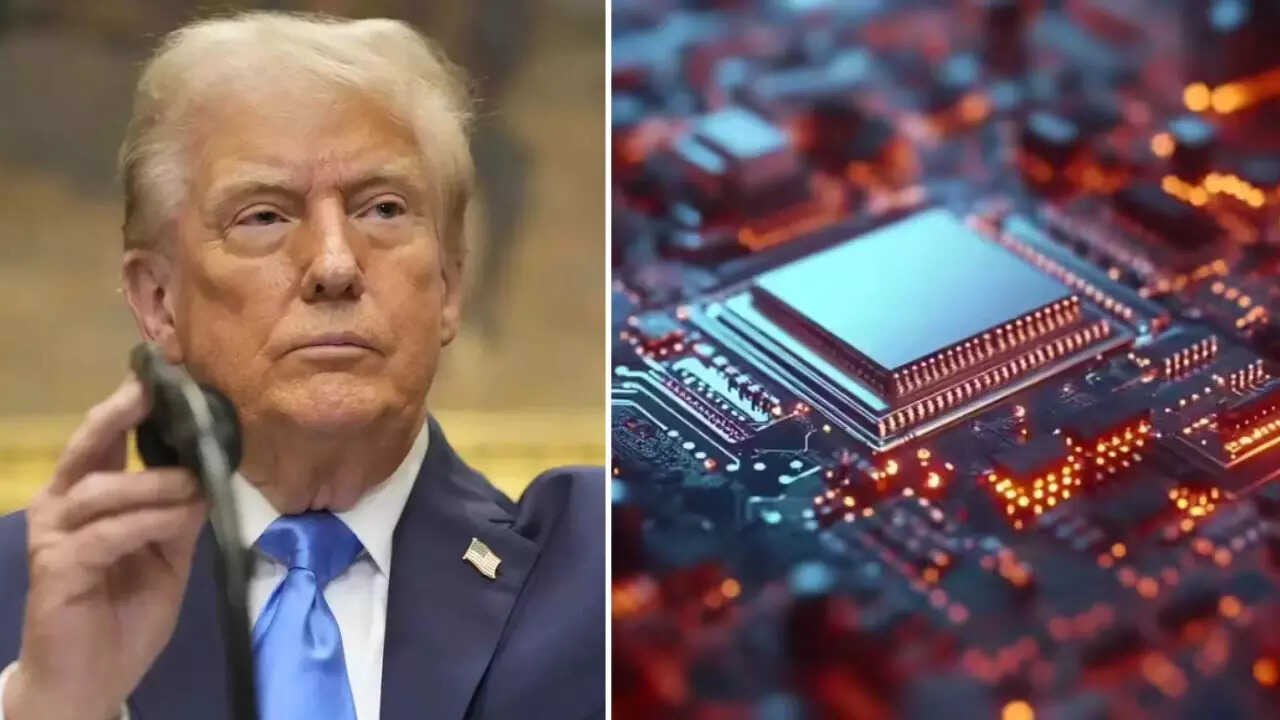The Trump administration is reportedly planning new tariffs on imported electronics, based on their chip content, to boost US manufacturing. This move could impose a 25% rate on chip value, potentially raising costs for American consumers and worsening inflation. Major chipmakers like TSMC and Samsung might face significant impact, as the policy aims to reshore critical production.
Decoding the Chip War: Could Tariffs Reshape the Electronics Landscape?
Whispers are turning into a roar in the world of international trade, with the potential for a seismic shift in how we access our beloved gadgets. The buzz revolves around potential tariffs on foreign electronics, a move reportedly considered by the previous administration with the aim of bolstering national economic security. But what exactly does this mean for your next smartphone, laptop, or even your car?
The idea, at its core, is about safeguarding the United States’ access to essential semiconductors. These tiny but mighty chips are the brains behind almost every piece of modern technology. From running sophisticated AI algorithms to managing the simplest functions of your washing machine, chips are indispensable.
The core idea that was being explored was to strategically leverage tariffs to incentivize domestic chip production and reduce reliance on foreign suppliers. The goal, it would seem, was to fortify America’s position in the global technology race.
But how might a chip tariff actually work? The concept involves imposing taxes on imported electronics that contain semiconductors. The added cost would, potentially, make foreign-made goods less competitive in the U.S. market, creating an incentive for manufacturers to either source chips domestically or establish production facilities within the United States.

The implications, however, are complex and far-reaching. For consumers, it could mean higher prices for electronics. Companies producing overseas would likely pass on at least some of the tariff costs, potentially leading to inflationary pressures in the consumer electronics market. Your next upgrade might suddenly become noticeably more expensive.
The tariff strategy could also impact the global supply chain. The semiconductor industry is highly interconnected, with various stages of production spread across different countries. A chip tariff could disrupt these established networks, potentially leading to inefficiencies and bottlenecks.
Furthermore, the plan was seen as potentially prompting retaliatory measures from other countries. Nations whose electronics exports are heavily reliant on the U.S. market could respond with their own tariffs, leading to a trade war that would harm all parties involved. Imagine escalating tariffs on everything from cars to agricultural products; the consequences could be significant.
It’s important to understand this isn’t just about making sure American companies thrive. The national security element comes into play because of the strategic importance of semiconductors. In a world increasingly defined by technological advancements, control over chip production is seen as essential for maintaining military and economic superiority. Dependence on foreign sources, particularly those perceived as potential adversaries, creates vulnerabilities.
The debate now centers on whether the potential benefits of chip tariff implementation, like increased domestic production and reduced reliance on foreign suppliers, outweigh the potential drawbacks, like higher prices for consumers and disruptions to the global supply chain.
It also raises questions about the best approach to achieve these goals. Are tariffs the most effective tool, or are there other strategies, such as government subsidies and investment in research and development, that could be more beneficial in the long run? You can explore more about government influence and policy with this related article on [how governments can affect market prices].
Ultimately, any decision regarding tariffs on foreign electronics will have a profound impact on the technology industry and the broader economy. Keeping a watchful eye on these developments is crucial as the ramifications will likely be felt by everyone.
Navigating the complexities of global economics is never easy, and the debate surrounding semiconductor tariffs highlights the challenges of balancing national security concerns with the realities of a globalized world. As this story unfolds, it’s clear that the future of technology – and the contents of your shopping cart – may depend on the decisions made by policymakers today.







